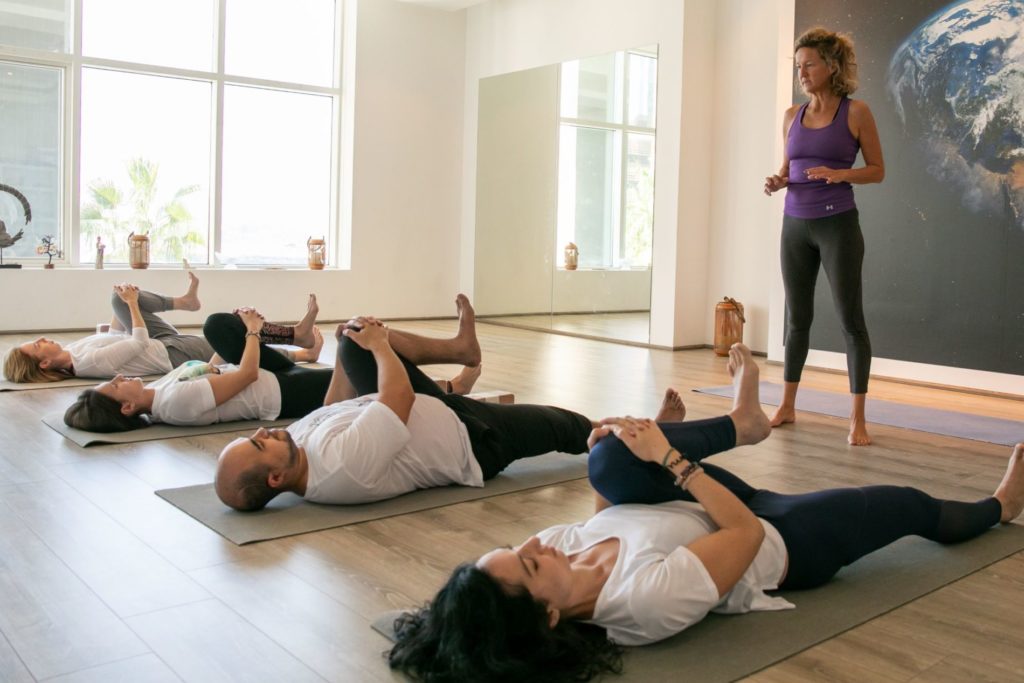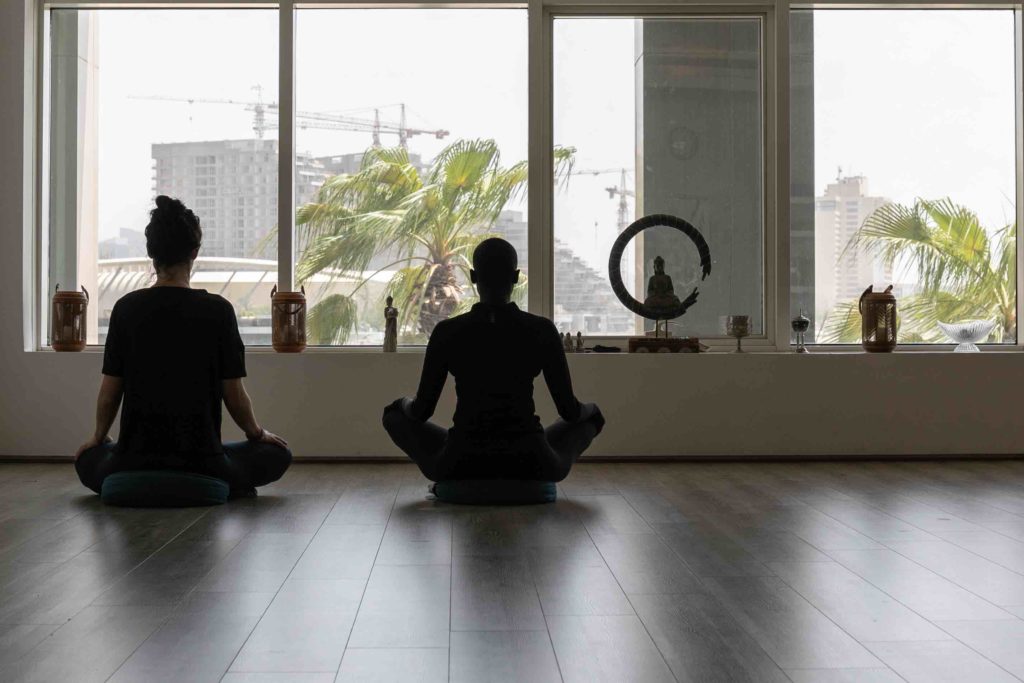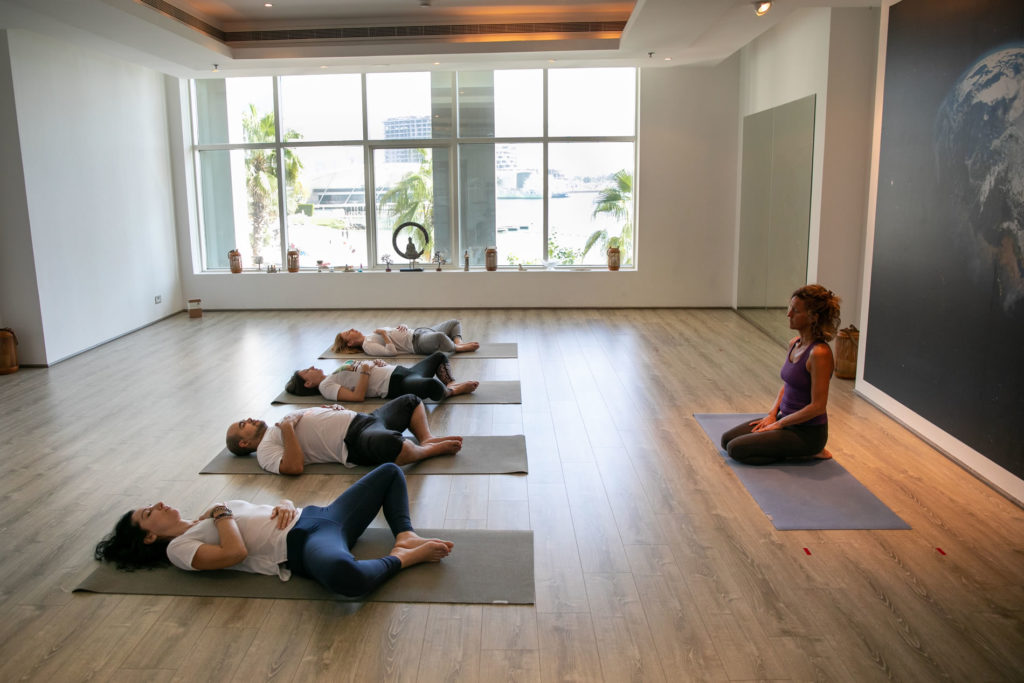PCOD is increasingly becoming a disease that affects 6 out of 10 women of reproductive age. Stress and a sedentary lifestyle are the biggest culprits in PCOD. What starts as unusual facial hair and acne on the face ends with serious PCOD symptoms like infertility and type 2 diabetes. PCOD not only affects women physically but also affects their mental health of women. Anxiety wreaks havoc on women, and it can strike at any time when you are happy and your heart starts pumping for no apparent reason.
So if you are one of those women who also suffer from PCOD/PCOS, then this article is for you. At the Open Circle yoga studio, we aim to improve the mental and physical health of all people via a holistic approach. By practicing yoga at least thrice a week, women can reduce symptoms and manage PCOD more healthily, at the same time improving their mental health as well. Below are steps on how yoga will help with PCOD.
Yoga May Decrease Testosterone Levels
A recent study done by researchers in the west revealed that around 70% of women who participated in the study reduced their testosterone levels by practicing yoga thrice a week. Women in the age group of 23 to 45 years participated in this study. These measurements were conducted initially and after the three-month trial period. On average, after the end of the trial period, there was a reduction of 27% in testosterone levels among women. The women also saw improvements in their anxiety and depression levels.
The Open Circle Yoga Studio is one of the best yoga classes in Abu Dhabi. We teach different types of yoga poses and exercises that will help you relieve your symptoms too. When we regularly practice yoga, the secretion of good hormones increases in our body and that helps in balancing hormone levels. Thus, the harmful secretion of excess male hormones such as testosterone is reduced in women.
Yoga Helps Build Muscle Mass
When you perform yoga exercises regularly, it helps you train your muscles. Building muscles is a very important aspect of managing PCOD. The major cause of obesity among women suffering from PCOD is insulin resistance. The bodies of women get trapped in a vicious circle when they suffer from PCOD.
Yoga is a physical exercise when performed under the guidance of good yoga studios in Abu Dhabi. Yoga gives similar effects to those of weight training. Several researchers say that more muscle mass helps in producing hormones that act similarly to insulin. This additional hormone helps maintain levels of insulin in the body and improves endocrinological functionality. With less insulin resistance, your body’s functions start to get to normal levels.
Get Regular Periods By Doing Yoga
One of the biggest symptoms of PCOD is irregular periods. Some women suffer from scanty periods that do not have periods for more than 45 days, while some women get frequent periods every 15 days that last more than 10 days. This condition severely damages a woman’s ovarian health and it should be managed immediately. If you suffer from such a condition, it is advised that you first seek the immediate help of a professional gynecologist or endocrinologist. After the doctor treats your initial symptoms, you can then attend yoga classes at the Open Circle Yoga Studio, which is one of the most experienced yoga centers in Abu Dhabi.
When you practice yoga regularly, it will help you get regular periods. When you do PCOD-specific yoga poses, those poses help increase blood flow in the ovarian areas. This increased blood flow increases and improves normal functions of ovarian organs, helping women have pain-free and regular periods. Even when women do not suffer from PCOD but have extremely painful full periods, if they perform yoga, their pain will be reduced.
Women From All Fitness Levels Can Practice Yoga To Reduce Their PCOD Symptoms
If you are wondering that you aren’t fit and how you will do yoga poses, then you are wrong. Yoga has exercises for all fitness levels. One of the most famous yogis says that yoga is not twisting the body into weird shapes but insists that yoga is a connection between mind, body, and the universe. You can start doing simple breathing exercises to relieve and manage your PCOD symptoms. Breathing exercises like pranayama and kapal bhatti can be done by any person. Kapal bhatti is known to be very beneficial for women suffering from PCOD. Other pranayamas, such as brahmari and yoga omkar, also help in reducing anxiety and stress in women.
The mindfulness component of yoga is a big benefiting factor that helps women relax and distress themselves when they practice yoga.
What Other Benefits Does Yoga Provide?
One major benefit yoga provides is the ability to benefit your mind and body at the same time. Several studies back up the pros of yoga that outweigh its cons. While performing and practicing yoga, one can get benefit from a wide array of things. Mood disorders, depression, anxiety disorders, difficulty focusing, and improving memory are some mental things that yoga helps with.
- Yoga can be practiced by all fitness levels in all age groups.
- Yoga helps in losing weight.
- Yoga helps in reducing the risk of cardiovascular diseases.
- Yoga can help reduce arthritis symptoms.
- Yoga helps in increasing hair growth and reducing hair fall.
- Yoga helps you stay young.
- Maintaining mobility and managing balance in older people can be helped by yoga.
What other exercises are good for PCOD?
If women perform weight training or resistance exercise weekly, it will be of great benefit to them. The benefits of yoga can also be obtained by weight training. When you combine 3 days of yoga and 3 days of weight training for managing PCOD, it becomes a very good balanced format of exercise for women.
Takeaway
PCOD is a lifestyle disorder that is caused by an unhealthy and sedentary lifestyle. The symptoms become worse when stress is added to the scene. However, these symptoms can be managed by getting a good blend of yoga exercise along with weight training and taking a doctor’s advice.
Readers should, however, note that this blog is not an alternative to a doctor’s or medical practitioner’s advice. The tips in this blog should be taken after consulting a licensed medical professional only.
[/vc_column_text][/vc_column][/vc_row]



